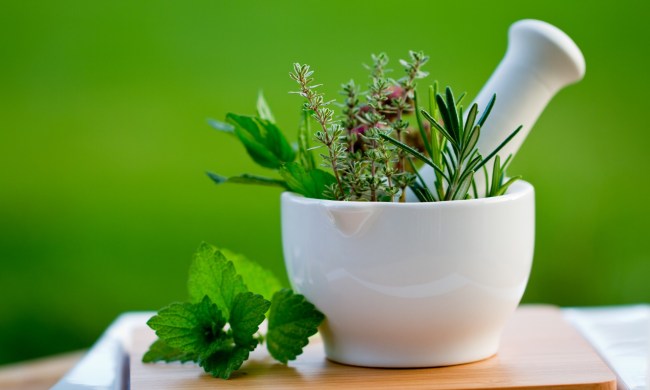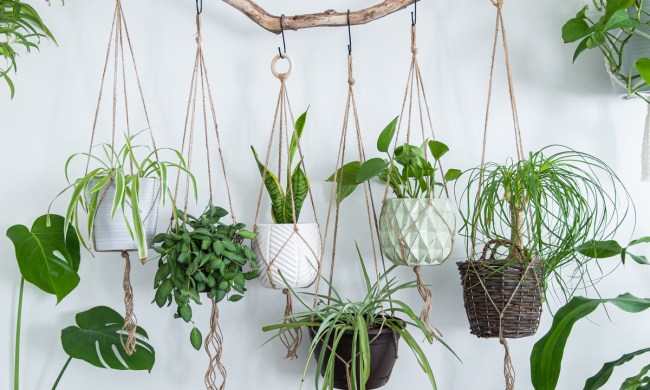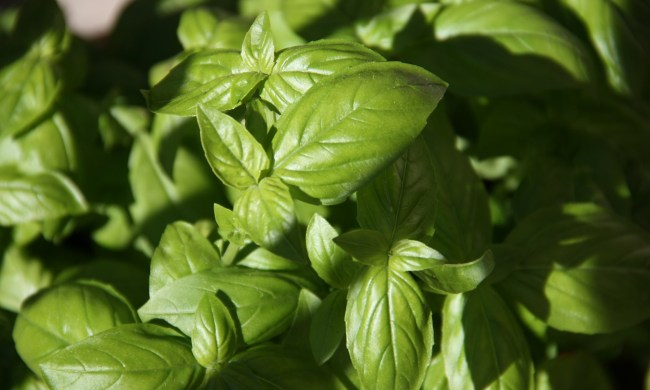Growing a DIY herb starter garden in your own kitchen can be daunting, but immensely rewarding! Not only do you get to grow more plants (who doesn’t love plants?) but herb plants fill your home with vibrant smells and give you fresh ingredients for your recipes. Herbs are some of the easiest plants to grow and maintain indoors, perfect for beginner and expert gardeners alike, so why wait?
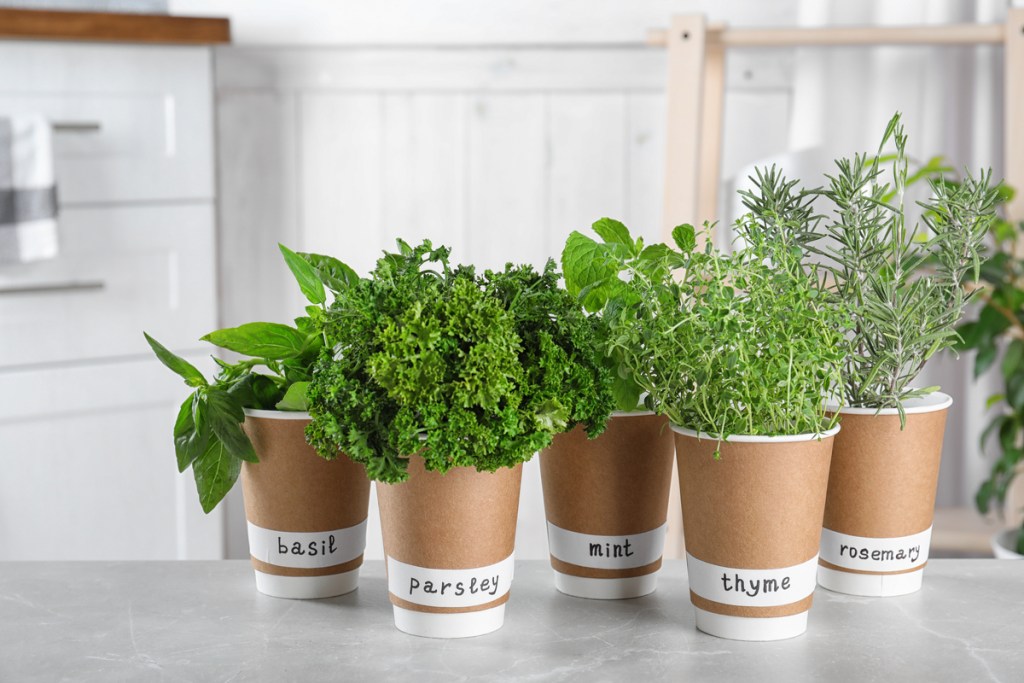
Why grow your own herbs?
Growing your own herbs indoors has a lot of additional benefits beyond just providing you with fresh ingredients for your favorite meals. On a practical level, it can often be more cost-effective to grow them at home (especially from seed) because you’ll be able to harvest as much as you need at any given time. Plus, the longevity of the plant is much greater than that of “fresh herbs” bought at the store that have already been harvested. You won’t have to worry as much about using them on time or throwing them away.
Many herbs also have added health benefits. For example, peppermint, which is commonly used in herbal teas, was shown in a 2019 review — via the use of peppermint oil — to relax muscles and aid in anti-inflammation, among other things. There are plenty of other herbs you can grow, too, such as lavender, chamomile, and lemon balm, that help promote good health and can be made into teas, essential oils, and salves.
What you’ll need for a successful herb garden
What you need will depend on the conditions of your home, the amount of space you have, and the type of garden you want to grow. For a small hydroponic herb garden, you’ll want to do some research on the different types of setups or buy a small pre-built one designed for herbs so you know which one will best suit your space and what you want to grow.
If you’re interested in doing a soil-based kitchen herb garden, you’ll benefit from having a variety of things on hand before picking out your herbs and bringing them home. Assess the space you have and decide how many herbs you’ll be able to properly grow, then buy an individual pot/container for each type of herb. You shouldn’t combine two different herbs in the same pot since they may require different care, but there’s no harm in putting a few plants of one kind into a larger container so long as they have space to thrive.
Research the care requirements for the herbs you want to grow, then make sure that you can meet those needs. It will often come down to whether or not your home receives enough natural lighting, so it could never hurt to have a few grow lights in your setup. Last but not least, get a pair of shears for harvesting and a set of plant markers. These will help you keep track of which herb is which in case you’re ever in a hurry and need to add some to a recipe in a pinch. (We’d hate for you to confuse the oregano with the cilantro.)
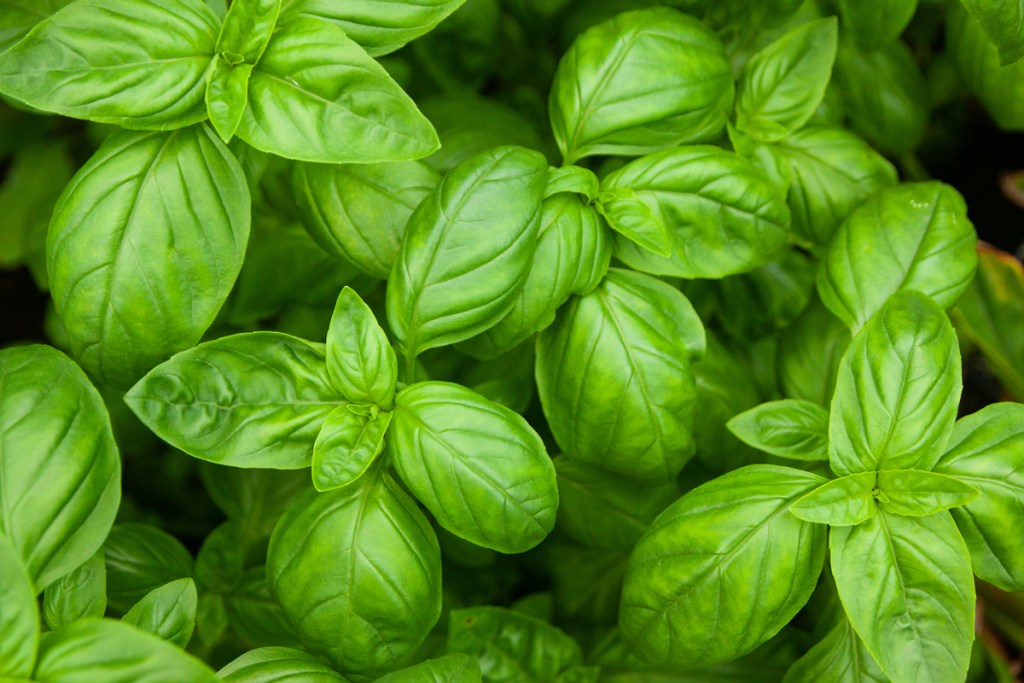
Choosing your herbs
When deciding what herbs to grow, you should focus on the herbs you’ll use the most or are the most fragrant. There’s no point to growing an herb you don’t enjoy in some way, shape, or form as it will seem more like a chore to keep them alive. Even if you only enjoy an herb for the aroma, it still brings added happiness to your home you otherwise wouldn’t have.
You should also consider your environment and your budget. If you don’t want grow lights or you can’t afford them, it wouldn’t be a good idea to purchase herbs that require more natural light than what your home offers. In a similar vein, if you only have a small windowsill to offer them, you should keep your herb garden small, choosing only your favorite herbs, so that they each have enough space to thrive without competing.
Make sure that no matter what herbs you choose, you put them in pots with good drainage with little room for them to grow. You don’t want to give them too much space, but because their roots grow rather fast, the pots should be slightly larger to avoid having to repot within the same season.
With proper growing conditions, you’ll have no trouble growing a successful DIY herb starter garden. The most important thing you can do is research and understand that different herbs will require different amounts of light, water, fertilizer, etc. No two plants are the same, but many herbs are very similar in the care they need. Just be wary of over- or under-watering, providing too much light, or letting them get too cold, and you’ll have plenty of fresh ingredients for your teas and meals. What could be better?

